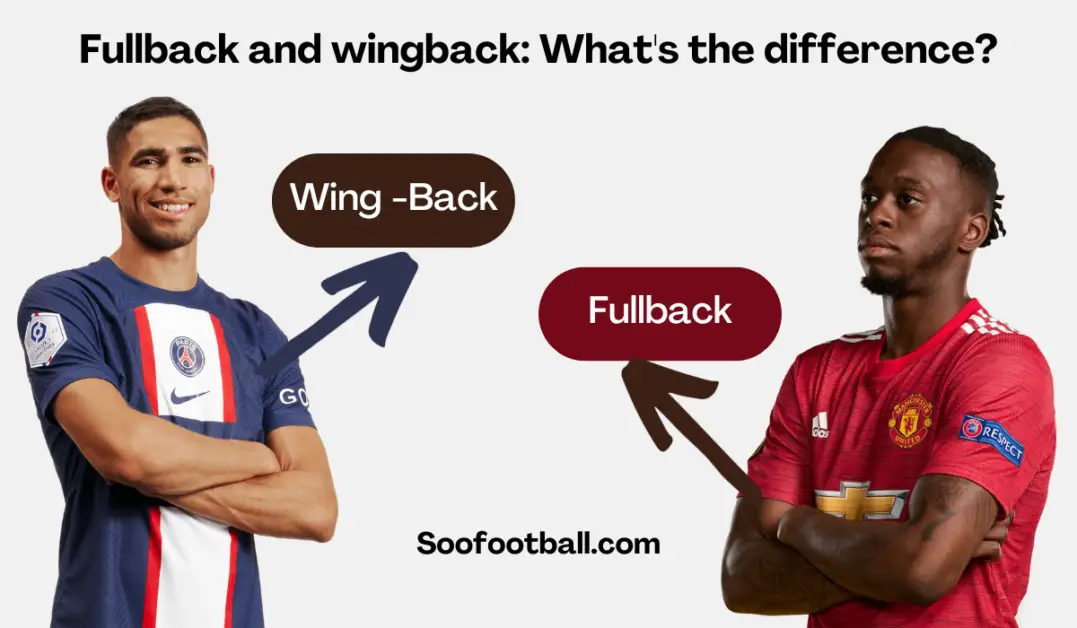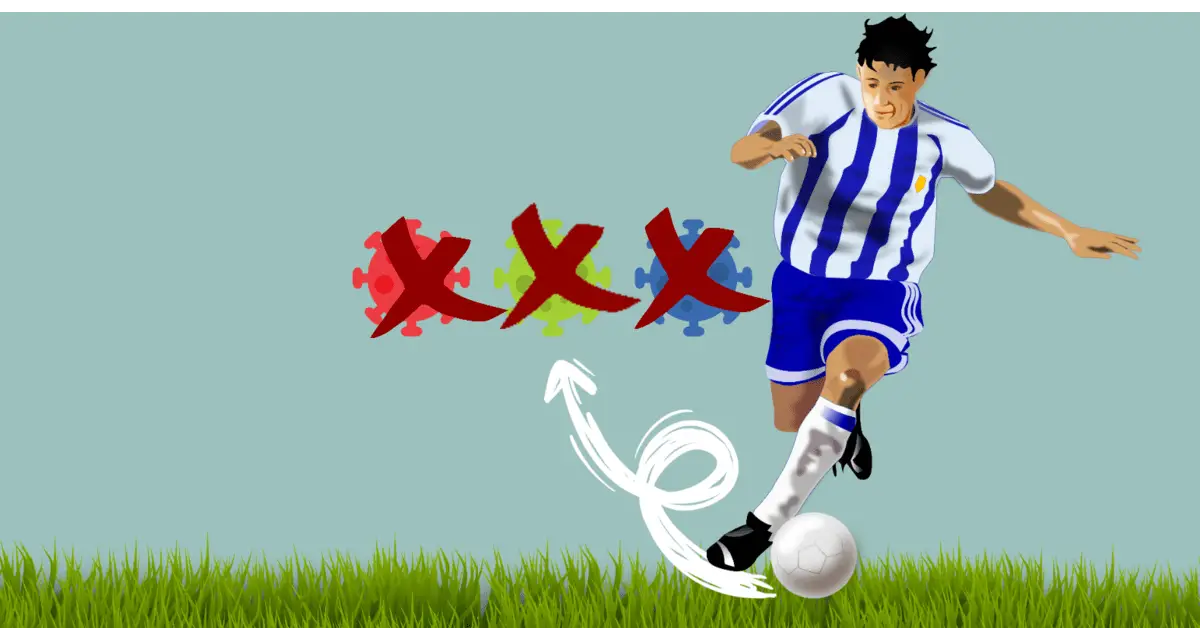The difference between the fullback vs wingback positions in football is not so much. In fact, they are similar positions, playing on the flanks of the team’s backline but differ depending on the team formation being used.
Both positions play crucial roles in organizing a team’s defence and attack. They have different tactical responsibilities that differentiate them. This article points out the key differences between fullbacks and wingbacks in football.
Fullback Position Explained
The fullbacks are positioned on the edges of a four-man defence, such as the 4-3-3, 4-4-2 or 4-5-1. They have the primary responsibility to defend against the opposition’s wingers and prevent them from creating goal-scoring opportunities from the flanks.
The fullbacks will often find themselves in one-on-one duels with wingers thereby needing strong tackling skills to dispossess opponents and intercept passes.
By doing so, the fullbacks must maintain a solid defensive position, ensuring they don’t get caught out of position when the other team is on the attack.
In as much as the fullbacks provide stability to the team’s defence, they might occasionally join the attack by overlapping with the midfield but their forward runs will be limited and less frequent.
Wingback Position Explained
Wingbacks are a more attacking version of fullbacks. They are usually used in formations with three centre backs such as 3-4-3, 3-5-2 or 5-4-1.
Wingbacks are naturally more versatile than fullbacks which makes them transition between defensive and offensive roles. This also makes them frequently overlap with the team’s wingers and are expected to create chances by delivering crosses and passes into the box.
While their primary focus is on the attack, wingbacks must also contribute defensively, tracking back to help defend against opponent wingers which provides tactical flexibility, allowing the team to quickly transition between a defensive formation and a more attacking one.
After explaining both positions individually, we will now look into the contrasting features of the fullbacks and wingbacks.
Fullback vs Wingback: Defending
The primary role of the fullbacks is to defend. Positioned just ahead of the centre backs in a back-four, they form the outer edges of the backline.
Their main objective is to defend against opposition wingers and ease up threats from the flanks by tracking the runs of wingers, blocking crosses and engaging in one-on-one duels to regain possession. Their ability to maintain their positions is vital for a team’s stability at the back.
Wingbacks, on the other hand, have a more flexible defensive role – they often operate in a more advanced position.
While they are expected to track back and contribute to the team’s defence, their primary role is to provide attacking options, having the freedom to push forward and exploit spaces created by the opposition’s defensive line.
The position requires the ability to transition quickly from attack to defence.
Fullback vs Wingback: Attacking
Fullbacks naturally have limited attacking responsibilities. Their primary role is to provide support to the midfield and wingers, acting as a source for passes and crosses and helping to keep possession of the ball.
However, modern football has witnessed a change in fullback style of play with some players contributing more to the attack. These attacking fullbacks often make overlapping runs with wingers, creating chances by whipping in crosses into the box.
On the other hand, wingbacks are expected to be more involved in the attack than fullbacks. They are more involved in dribbling, crossing and creating chances for their teammates.
Their presence in the opposition’s defence creates numerical advantages and opens, goalscoring opportunities. However, they still need to balance their attacking duties with defensive responsibilities.
Formation And Tactical Setups
The use of fullbacks or wingbacks is heavily dependent on the team’s formation and tactics. In a four-man defence such as 4-4-2 or 4-3-3, fullbacks are deployed and focus more on defensive duties.
However, in formations involving a three-man or five-man defence like the 3-5-2 or 5-3-2, the wingbacks are used and allow for more attacking options and flexibility, providing depth in the team’s attacking play.
Conclusion
In a nutshell, the main difference between a fullback vs wingback is the extent of attacking freedom. Wingbacks offer more attacking threats than natural fullbacks. Fullbacks have to attack cautiously as they usually have just two centre-backs to cover for counterattacks, unlike wingbacks who have three.
Fullbacks and wingbacks are similar but have different positions on the pitch, each with its set of roles and responsibilities. Fullbacks are primarily defensive players who focus on preventing attacking threats from the opposition wingers while wingbacks are more attack-minded and contribute significantly to both defence and attack.
However, modern football has brought about a slight change with fullbacks becoming more attacking with the likes of Trent Alexander-Arnold & Andrew Robertson and wingbacks being asked to defend as well.





